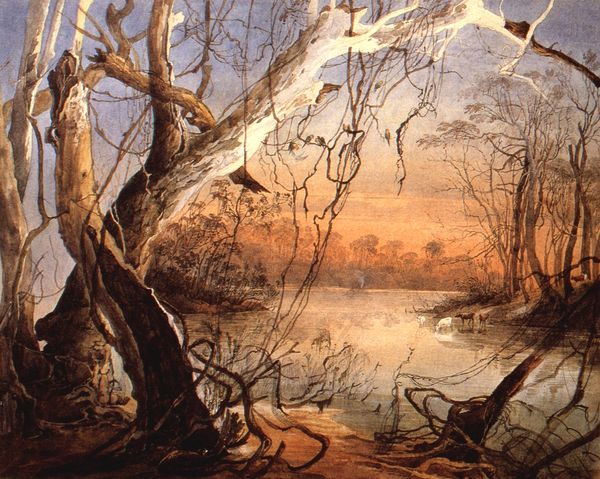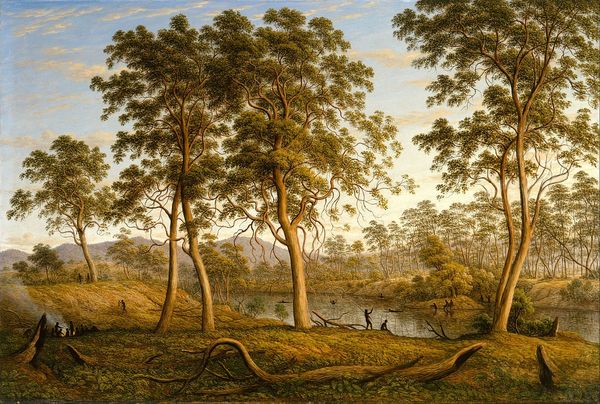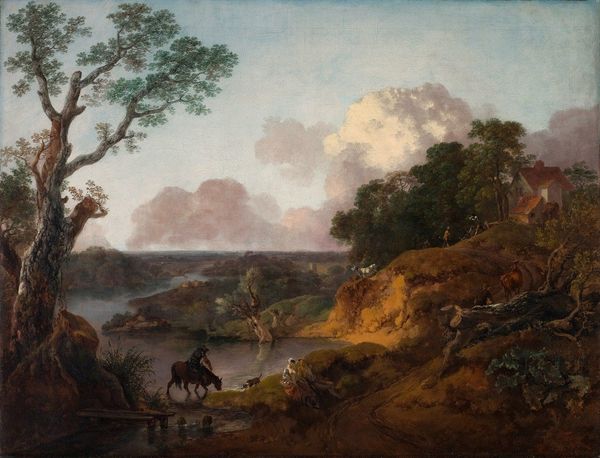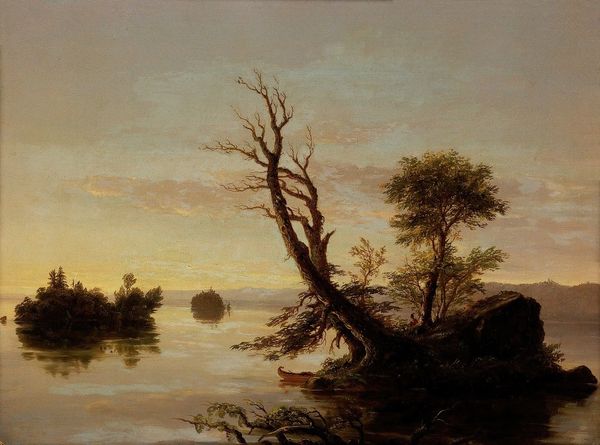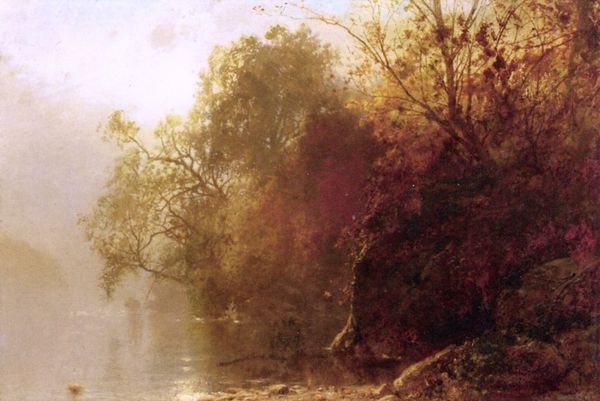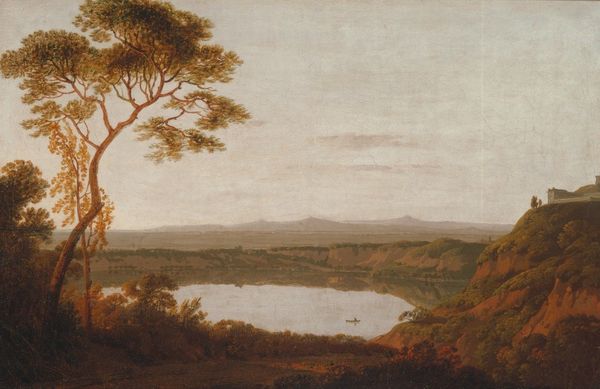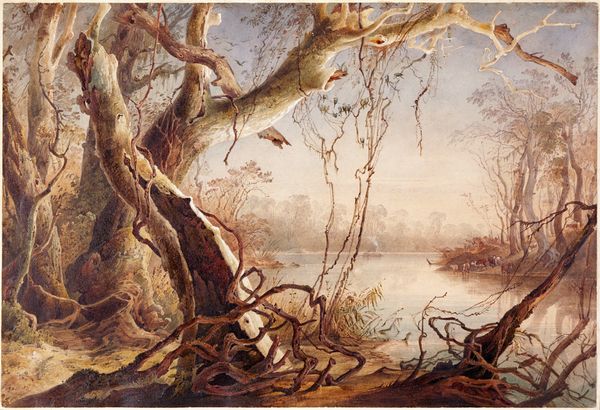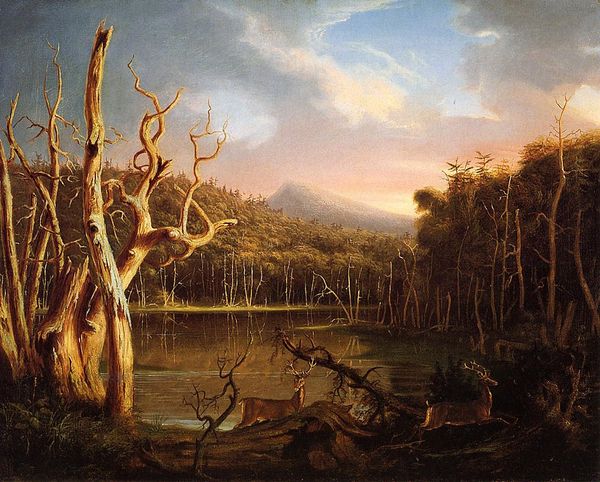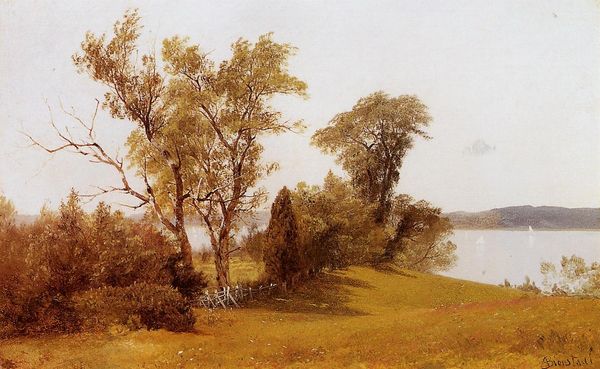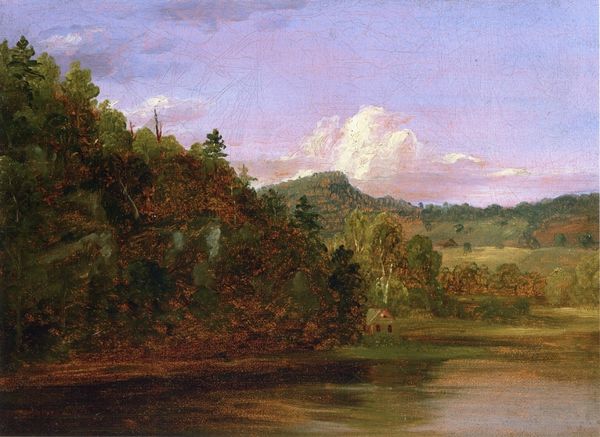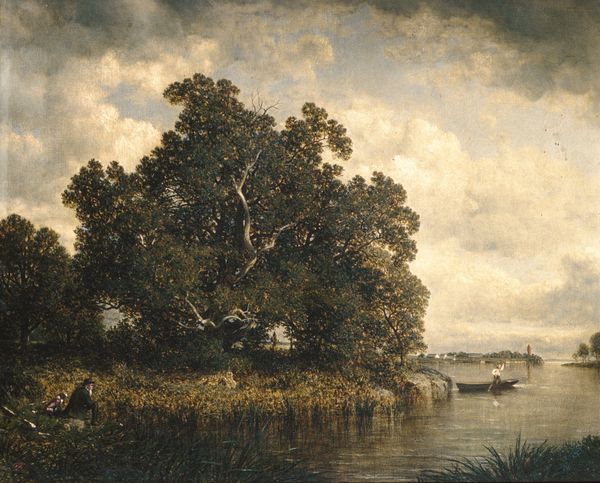![Mouth of the Wabash [ Indiana ] by Karl Bodmer](/_next/image?url=https%3A%2F%2Fd2w8kbdekdi1gv.cloudfront.net%2FeyJidWNrZXQiOiAiYXJ0ZXJhLWltYWdlcy1idWNrZXQiLCAia2V5IjogImFydHdvcmtzLzc0MmIwMDkwLTk1MWYtNDA2Ny1hM2Y0LWU0MTM3NGEwNmE3Ni83NDJiMDA5MC05NTFmLTQwNjctYTNmNC1lNDEzNzRhMDZhNzZfZnVsbC5qcGciLCAiZWRpdHMiOiB7InJlc2l6ZSI6IHsid2lkdGgiOiAxOTIwLCAiaGVpZ2h0IjogMTkyMCwgImZpdCI6ICJpbnNpZGUifX19&w=1920&q=75)
painting, plein-air, watercolor
#
painting
#
plein-air
#
landscape
#
river
#
watercolor
#
hudson-river-school
#
water
#
nature
#
realism
Copyright: Public domain
Curator: Karl Bodmer, a Swiss artist, painted "Mouth of the Wabash [ Indiana ]" in 1833 using watercolor, a defining work of the Hudson River School and capturing a realism tinged with romanticism. Editor: It feels humid and still, doesn’t it? The hazy light and reflections in the water create such a tranquil atmosphere. The composition with its foreground of tangled branches almost makes it feel claustrophobic, but in an immersive way. Curator: Bodmer's involvement in Prince Maximilian's expedition led to this, and other ethnographic portrayals that offer us invaluable insights into 19th-century interactions between colonizers and Indigenous communities. Think of the legacy of colonialism encoded in landscapes like this one, even in the ostensibly "empty" depictions. Editor: I notice how the artist frames the vista, almost stage-like, emphasizing the tonal qualities of the golden light reflected across the water and the texture of the trees, which are almost reaching out towards the viewer. Semiotically speaking, nature acts as both signifier and signified. Curator: Exactly, but remember the politics inscribed. Depictions of supposedly untouched landscapes often masked dispossession, contributing to romantic narratives which downplayed the realities of forced displacement, cultural genocide, and systemic oppression suffered by Indigenous peoples. The Hudson River School helped manufacture consent. Editor: True, we cannot extract a work of art from the historical discourse it inhabits, or willingly ignore the consequences or historical context. But stepping back for a moment: note the artist’s use of light and shadow creating depth and complexity? Even though the palette itself is limited to muted colors, observe how Bodmer suggests texture by juxtaposing one against another, drawing the eye. Curator: Well, let's keep our eye equally trained on unearthing whose histories get painted over. By acknowledging the social and political context of these paintings, we develop a better sense of what art and whose interests it ends up serving. Editor: It seems that Bodmer’s work here allows one to read many texts simultaneously: as both an artifact and a document: both aesthetic object and socio-historic artifact. It’s beautiful in its technique while holding uncomfortable truths about an era.
Comments
No comments
Be the first to comment and join the conversation on the ultimate creative platform.

